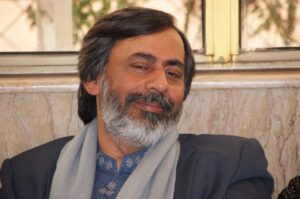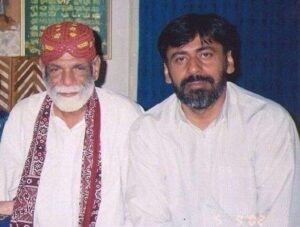Remedy Gallbladder Stones
Introduction
Gallbladder stones, commonly known as gallstones, are a prevalent health issue that affects many individuals worldwide. This article aims to provide a comprehensive understanding of gallbladder stones, their causes, management strategies, and introduces “The Ultimate Remedy,” an unconventional audio therapy method designed to complement traditional treatments.
Introduction to Gallbladder Stones
Gallbladder stones are hard deposits that form in the gallbladder, a small organ located beneath the liver. The gallbladder’s primary function is to store bile, a fluid produced by the liver to help digest fats. Gallstones can vary in size and may remain asymptomatic or cause significant health issues.
Understanding Gallbladder Stones
Gallstones are classified into two main types:
- Cholesterol Stones: The most common type, composed mainly of hardened cholesterol.
- Pigment Stones: Smaller and darker, made primarily of bilirubin, a substance formed from the breakdown of red blood cells.
Symptoms of gallbladder stones may include pain in the upper abdomen, nausea, vomiting, and digestive problems, particularly after eating fatty foods.
Causes of Gallbladder Stones
Several factors contribute to the formation of gallstones:
- Excess Cholesterol in Bile: An imbalance in the substances that make up bile can lead to cholesterol crystallization.
- Excessive Bilirubin in Bile: Certain conditions, like liver cirrhosis or blood disorders, can cause an excess of bilirubin.
- Gallbladder Not Emptying Correctly: If the gallbladder doesn’t empty completely, bile may become very concentrated, contributing to stone formation.
Risk factors include obesity, diabetes, certain medications, and a family history of gallstones.
Management of Gallbladder Stones
The management of gallbladder stones depends on the symptoms and stone size. Common treatments include:
- Observation: If the stones are asymptomatic, they may just need to be monitored.
- Medications: Certain drugs can dissolve cholesterol gallstones but may take years to be effective.
- Surgical Removal: The gallbladder may need to be surgically removed in cases of severe symptoms or complications.
Dietary changes, like reducing fat intake, can also help manage or prevent gallstones.
The “Ultimate Remedy” An Alternative Approach
The Ultimate Remedy: A Unique Approach to Gallbladder Stones
“The Ultimate Remedy” presents an innovative approach to complement traditional treatments for gallbladder stones. This audio therapy uses sound frequencies and intention to promote healing and alleviate related conditions.
How to Use The Ultimate Remedy
Download the Audio: Access The Ultimate Remedy audio from our website. Links are provided for easy download.
Listen According to Instructions: Follow the guidelines for listening to experience the full therapeutic benefits.
Support and Testimonials: For any inquiries or additional information, contact help@mastmasthealers.com. Testimonials are available to understand the effectiveness of the therapy.
Benefits of The Ultimate Remedy
Therapeutic Sound Frequencies: The audio utilizes specific frequencies known for their potential to promote relaxation and well-being.
Intention-Driven Healing: The focused intention combined with sound may enhance the overall therapeutic experience.
Conclusion
While gallbladder stones can be a painful and uncomfortable condition, understanding their causes and management is crucial for effective treatment. Traditional medical approaches remain the primary method for treating gallstones. However, supplementary methods like “The Ultimate Remedy” audio therapy can be explored as a complementary approach to promote overall well-being and possibly alleviate some symptoms associated with gallbladder stones.
Happy Patients
Years since day one
%
Satisfaction
Testimonial
How to Listen to the Ultimate Remedy:
Download the Ultimate Remedy audio from our website or app. It’s free and accessible to all.
- Choose a quiet, comfortable space where you won’t be disturbed.
- Close your eyes and visualize yourself in the presence of your higher power or the essence of the universe.
- Listen to the audio with great concentration and closed eyes.
- After the audio is finished, open your eyes and take half a glass of water.
- Close your eyes again and say “your name” or a word that represents your belief (such as “God”, “Universe”, or “Love”) three times in your heart.
- Drink the water with closed eyes in three sips.
- For optimal results, it’s recommended to listen to the Ultimate Remedy three times a day (morning, evening, and before sleeping) for seven consecutive days.
About the Creator – Syed Safdar Hussain Bukhari
Introduction and Early Life
Syed Safdar Hussain Bukhari, also known as Kakian Wali Sarkar, was a unique example of kindness, devotion, and tenacity. Born on May 6th, 1940, he dedicated his life to serving humanity and providing relief to those suffering from various ailments.

Social Work and Spiritual Journey
Between 1960-1980, he engaged in social work by undertaking road repairs, establishing schools, and arranging medical supplies in Lilla Town. In 1990, he left his ancestral home and family wealth to move to Lahore, where he comforted the depressed and saddened through mystic dance and music.
The Ultimate Remedy
In 1998, Baba Bukhari’s research led to the discovery of “The Ultimate Remedy,” a blessed audio that he believed could cure physical, psychological, spiritual, and supernatural problems. The remedy involved listening to the audio three times a day for seven consecutive days, followed by a specific water ritual. This method claimed to cure various ailments, including coronavirus, AIDS, cancer, drug addiction, worldly problems, and psychological issues.
Legacy and Death
Baba Bukhari’s research and unconditional love left a lasting impact on humanity, providing positive thinking, peace of mind, health, fearless life, and an example of love and compassion. He passed away on February 8th, 2005, leaving behind a legacy of healing through “The Ultimate Remedy.”

His spiritual successor is Syed Baba Jaan
According to Baba Bukhari (RA), his spiritual successor is Mr. Shakir Uzair, also known as Syed Baba Jaan . As the chosen heir to Baba Bukhari’s spiritual legacy, Syed Baba Jaan carries forward the teachings and practices that have been passed down through generations. Dedicated to serving humanity and promoting healing, Mr. Shakir Uzair continues to spread the message of love, compassion, and the transformative power of the Ultimate Remedy to help countless individuals in their journey towards holistic wellness and personal growth.

